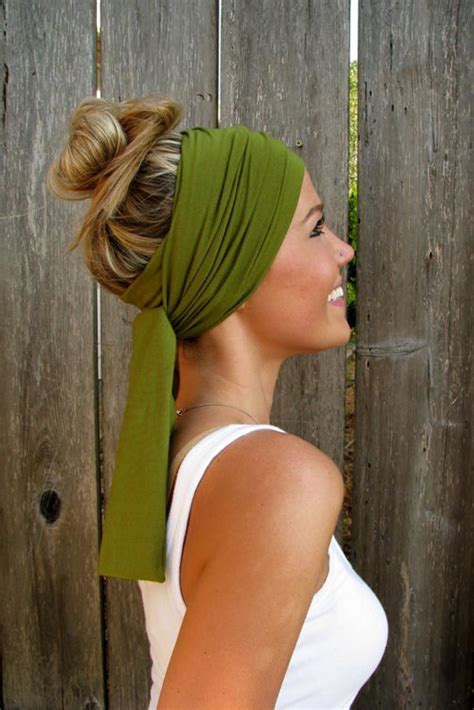Head Scarves & Wraps for Cancer Patients
Cancer treatment can lead to hair loss, which can be a difficult and emotional experience for patients. Head scarves and wraps can provide comfort, style, and a sense of empowerment during this time.

Key Motivations for Head Scarf Use
- Emotional Support: Head scarves can provide a sense of security and privacy during a time when patients may feel vulnerable.
- Practicality: Scarves can protect the scalp from sun exposure, cold weather, and irritation from medical devices.
- Style: Scarves and wraps can be used to express creativity and femininity, boosting self-esteem and confidence.
- Empowerment: Choosing and wearing a head scarf can give patients a sense of control and agency over their appearance.
Pain Points and Challenges
- Discomfort: Tight or ill-fitting scarves can cause pressure headaches or neck pain.
- Scalp Sensitivity: Certain fabrics or hairpieces can irritate sensitive scalps.
- Social Stigma: Some patients may face negative reactions or misconceptions about headwear.
Effective Strategies and Solutions
- Choose Soft, Breathable Fabrics: Look for scarves made from materials like cotton, silk, or bamboo, which are gentle on the skin.
- Adjust Scarves Properly: Tie or wrap scarves snugly but not too tightly to avoid pressure points.
- Consider Scalp Protection: Wear a beanie or headscarf underneath scarves to protect the scalp from irritation.
- Embrace Head Scarves: View head scarves as a form of self-expression and a symbol of strength and resilience.
- Seek Support: Join support groups or reach out to loved ones for encouragement and practical advice.
Why Head Scarves Matter
Beyond their practical benefits, head scarves can have a significant emotional and psychological impact on cancer patients:
- Boosting Self-Confidence: Scarves can restore a sense of normalcy and femininity, reducing the emotional toll of hair loss.
- Facilitating Social Interactions: Headwear can break down social barriers and encourage conversations about cancer and recovery.
- Promoting Mental Health: Scarves can provide a sense of comfort, reduce stress, and improve overall well-being.
The Benefits of Head Scarves & Wraps
- Comfort: Soft, breathable fabrics provide relief from physical discomfort.
- Style: Scarves come in a wide range of colors, patterns, and textures to suit every taste.
- Empowerment: Choosing and wearing scarves empowers patients with control over their appearance.
- Community: Head scarves foster a sense of belonging and support among cancer patients.
- Symbol of Strength: Scarves represent resilience and the journey of recovery.
Table 1: Choosing the Right Head Scarf Material
| Material | Benefits | Drawbacks |
|---|---|---|
| Cotton | Soft, breathable, affordable | Can wrinkle easily |
| Silk | Luxurious, smooth, hypoallergenic | Expensive, requires delicate care |
| Bamboo | Eco-friendly, odor-resistant, wicks moisture | May be less durable |
| Wool | Warm, insulating, moisture-wicking | Can be itchy for some |
| Satin | Smooth, shiny, protects hair | Can be slippery to tie |
Table 2: Types of Head Scarves
| Type | Description | Benefits | Drawbacks |
|---|---|---|---|
| Turban | Covers the entire head | Full coverage, easy to style | Can be bulky |
| Headwrap | Rectangular scarf tied around the head | Versatile, customizable | Requires tying skills |
| Bandana | Square scarf folded and tied | Compact, easy to carry | May not provide full coverage |
| Beanie | Fabric cap that covers the scalp | Warm, comfortable, low-maintenance | May not be stylish |
Table 3: Scarving Techniques
| Method | Description | Benefits | Drawbacks |
|---|---|---|---|
| Head Scarf Tie: | Tie the scarf around the head twice, creating a knot at the back | Secure, full coverage | Can be tight |
| Headwrap Wrap: | Wrap the scarf around the head once, tucking the ends in | Comfortable, customizable | May require adjusting |
| Bandana Fold: | Fold the bandana into a triangle and tie it behind the head | Compact, sporty | May not be very secure |
| Turban Twist: | Twist the scarf into a rope and wrap it around the head | Stylish, protective | Can be time-consuming |
Table 4: Head Scarf Care Tips
| Tip | Description | Benefits |
|---|---|---|
| Hand Wash: | Gently wash scarves in cold water with a mild detergent | Preserves fabric, prevents fading |
| Air Dry: | Lay scarves flat to dry | Prevents shrinkage, prolongs lifespan |
| Iron Carefully: | Iron scarves on low heat, using a cloth to protect fabric | Removes wrinkles, improves appearance |
| Store Properly: | Fold scarves neatly and store them in a cool, dry place | Prevents damage, ensures longevity |
